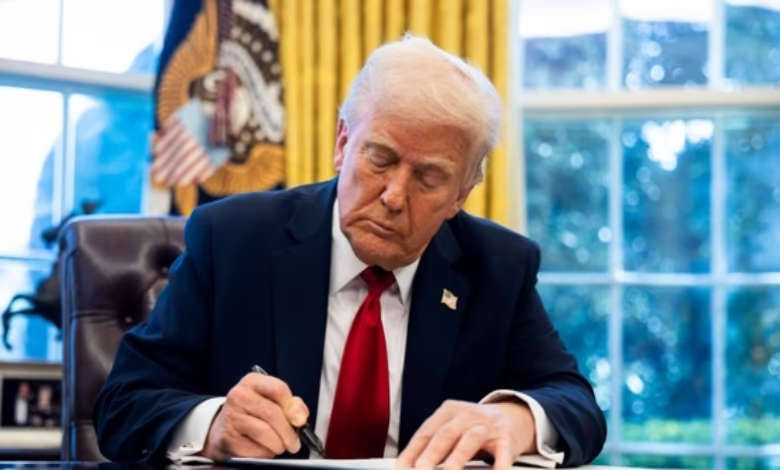Donald Trump announces new 25% tariff on imported cars. What does it mean? | check here

President Donald Trump unveiled a 25% tariff on imported automobiles on Wednesday, asserting it will strengthen U.S. manufacturing and yield $100 billion annually. “This measure will further stimulate economic growth. Essentially, we’re imposing a 25% tax on imports,” Trump told reporters during a press conference. The tariff, effective April 3, could elevate costs for automakers and reduce sales, yet Trump predicts it will spark new factory openings in the U.S. and unravel what he deems an “absurd” supply chain linking the U.S., Canada, and Mexico. “This change is here to stay,” he underscored.
A central pillar of Trump’s presidency, the auto import tariffs aim to shift production to American soil and shrink the budget deficit by increasing costs for foreign-made vehicles. However, Mary Lovely, an economist and senior fellow at the Peterson Institute for International Economics, cautioned the Associated Press that the policy will drive up vehicle prices and shrink consumer options. “Such taxes disproportionately burden middle and working-class families,” she said. With new car prices already averaging $49,000, Lovely noted that more households may be unable to buy new vehicles, relying instead on aging ones.
The Commerce Department reports that the U.S. imported nearly 8 million cars and light trucks last year, valued at $244 billion, primarily from Mexico, Japan, and South Korea. Auto parts imports topped $197 billion, mostly from Mexico, Canada, and China.
what’s changing and what to expect next?
- Revenue Generation: The White House forecasts the tariffs will generate $100 billion annually to trim the budget deficit and bolster American industries. Experts, however, warn that rising costs could suppress consumer demand and slow economic growth.
- Higher Car Prices: If automakers pass the tariff costs to buyers, imported vehicles could jump by $12,500. Coupled with the current $49,000 average price, this may put new cars out of reach for many middle-class consumers.
- Manufacturing Shift: The administration contends the tariffs will lure automakers to relocate production to the U.S., boosting jobs. Trump highlighted Hyundai’s $5.8 billion steel plant in Louisiana as proof his approach is effective.
- Long-term Uncertainty: While the White House touts a stronger U.S. auto industry, reconfiguring supply chains is a slow process. In the near term, higher costs and potential job losses may precede any gains for automakers and consumers.
- Impact on Automakers: Dependent on global supply chains—sourcing parts from Mexico, Canada, and Asia—U.S. and foreign carmakers face a tough choice: absorb the cost increases, raise prices, or overhaul production, a shift that could take years.
- Market Response: After Trump’s announcement, General Motors’ stock dipped nearly 3%, and Stellantis, owner of Jeep and Chrysler, fell 3.6%. Ford saw a slight uptick, but investors remain cautious about long-term profitability.
- Global Backlash: Canadian and European Union (EU) leaders slammed the tariffs, citing economic fallout. Canadian Prime Minister Mark Carney vowed to safeguard Canadian businesses, while the EU warned of harm to consumers and trade relations.
- Retaliation Risk: The tariffs could ignite a global trade war, with other nations poised to retaliate. The EU has threatened a 50% tariff on U.S. spirits, prompting Trump to float a 200% tax on European alcohol in response.
- Tax Deduction Plan: To ease the sting of higher car costs, Trump proposed letting buyers deduct auto loan interest from federal income taxes, but only for U.S.-made vehicles.
- Trade Impact: Economists caution that the tariffs could stoke inflation and narrow consumer choices. They fit into Trump’s wider economic playbook, which includes tariffs on steel, aluminum, computer chips, and energy products.
As the April 3 start date nears, the tariff’s promise of domestic growth hangs in a delicate balance with risks of rising prices, trade friction, and economic uncertainty.



